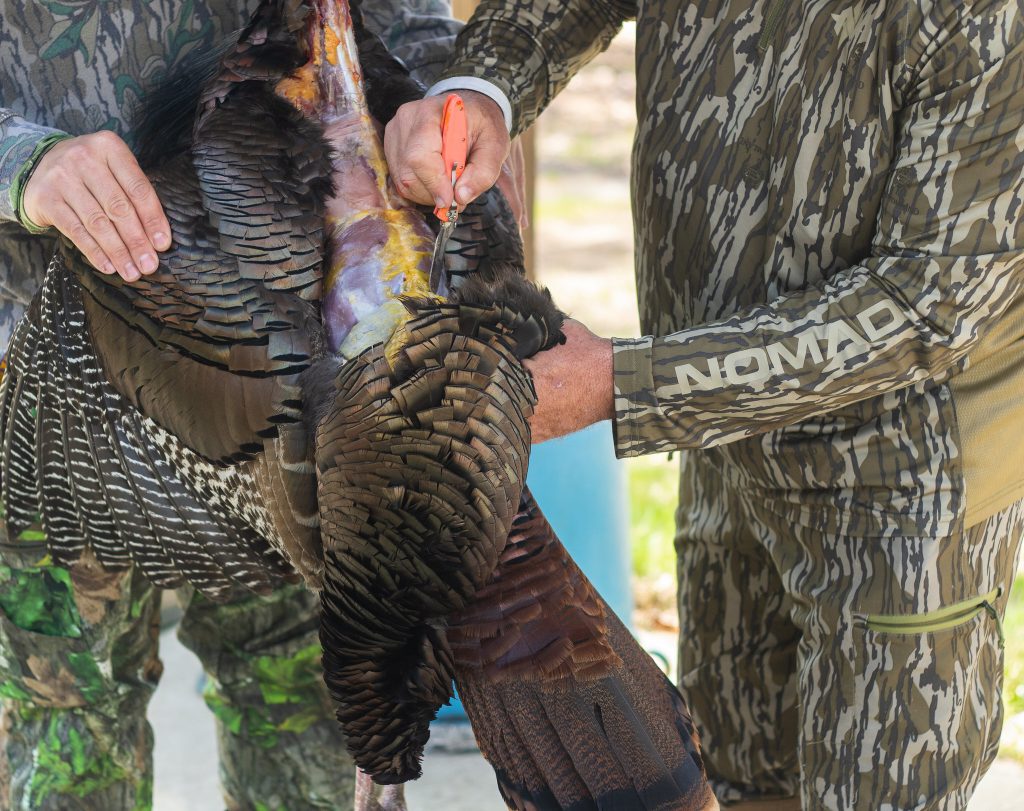Tips for Turkey Taxidermy
Whether it was your first gobbler, one that was from a memorable trip with family and friends or maybe you were even lucky enough to hunt a Gould’s or Ocellated, there are many reasons that you may consider taxidermy.
If you do plan on getting your bird mounted, there are some tips you should know ahead of time.
First, it’s good to schedule with a taxidermist before your hunt, so all logistics can be arranged accordingly, allowing you to get your bird there as smoothly and hassle-free as possible. This is especially true if you plan to use a taxidermist out of state. Since this could be the bird of a lifetime, it would also behoove you to use a taxidermist specializing solely in turkeys.
“I've seen a lot of good taxidermists over the years that do a lot of different animals but specialize in maybe one of them,” said John Beard, 27-year taxidermy veteran and the NWTF’s 2019 Grand National Champion in the Master of Masters turkey division. “From my experience, that guarantees you quantity but costs you quality. I do not want quantity, I want quality. I recommend finding someone who specializes in your species to be mounted. For turkey, find a turkey guy. For deer, find a deer guy. For duck, find a duck guy."
In addition to finding a taxidermist that solely focuses on turkeys, Beard offered some other tips when looking for a taxidermist.
“If they don't have any current work in their shop, then that is a red flag,” said Beard. “If they do have current work and you like their quality and price, then you found your taxidermist.”
What separates well-done taxidermy from poorly done is how life-like the bird looks, longevity of the mount and overall quality of the finished product, and to ensure these attributes, there are a couple of things you should remember when bringing a bird back from the field.
“The most talked about process I explain to hunters on how to ensure their birds get back to me in good shape for taxidermy is, first and foremost, cut nothing; do not get breast meat out,” said Beard. “I want the bird whole as needed for the taxidermy process.”
(Hunters wishing to keep meat and have the bird mounted can follow steps for “prepping a bird from outside the U.S.”)

Prepping a turkey for your taxidermist
Beard suggests doing the following with your harvest for the best taxidermic product:
- Bring three paper towels folded up in a sandwich bag with a roll of black electrical tape and one large black trash bag. All this easily folds up and compacts perfectly into a hunting vest.
- Right after harvest, immediately get on the bird and prevent him from flopping and causing feather loss and damage.
- Once the bird is dead, take out the three paper towels, stick one down the bird's throat and use the other two to wrap around the head, and then cover all that with the sandwich bag and seal with tape.
- Place the bird head first in the large trash bag, and then get it to the taxidermist as soon as possible or freeze it immediately.
Prepping a bird from outside the U.S.
For those hunting birds outside of the U.S., you will encounter a situation where the USDA requires the bird to be skinned before being shipped to a USDA-certified taxidermist. If you are required to skin your bird, follow these tips to keep your bird as clean and intact as possible:
- Wrap the bird’s head, as mentioned previously.
- Neatly and precisely cut the tail fan off the bird and place the tail fan to the side.
- Cut the legs off from the top of the drumstick down with skin and feathers still attached.
- Case skin the legs to get the meat off the drumstick while leaving the skin attached, with as little damage as possible.
- After the legs are off, with the bird laying on its back, make a horizontal incision from where the first leg was to where the second leg was. (*Do not cut vertically up the bird’s chest*).
- Place your hands between skin and meat and slowly detach the feathers and skin off the meat.
- Invert the bird and continue slowly working the skin and feathers off the bird (*If you see blood, immediately clean with a paper towel to prevent any from getting onto feathers*).
- Carefully detach humorous bone and cut cape from meat.
Your final product should be a clean turkey cape with the head still attached and all the meat completely separated.
For a more in-depth visual tutorial on how to properly cape your bird, watch Beard's demonstration
Getting your bird mounted is an exciting experience and a great way to remember a hunt or celebrate an accomplishment. Completing just a few simple steps can ensure you remember your experience for the rest of your life.
For more information on John Beard’s taxidermy and his seminars, visit www.birdsonlytaxidermy.com.
